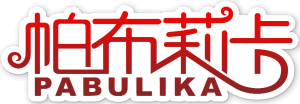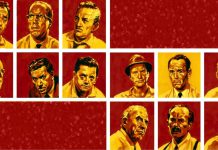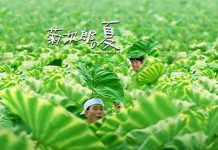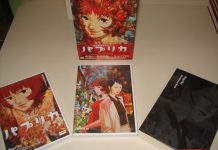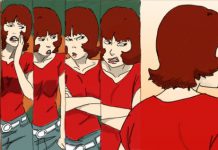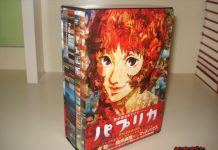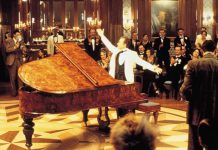The modern world is built on
this value, on this idea,
人♥民♥是政♥府♥的一部分。
that the people are part of
the government.
而且,你知道,在罗马,这种情况随处可见。
And, you know, this is so
everywhere in Rome.
看,水渠,水,所有人,SPQR。
Look, the aqueduct, water,
everybody, SPQR.
它真的无处不在。就这样吧。
It really is everywhere. That’s it.
看到这股力量是相当独特的
It’s pretty unique to see the power
的人在自己城市的每个角落宣布。
of the people declared in every
corner of their own city.
感谢这一点、
Thanks to that,
罗马人始终保持着对罗马的强烈所有权意识、
the Roman always maintain a strong
sense of ownership over Rome,
在整个共和国和帝国时代。
throughout the Republic
and Imperial eras.
但帝国在公元476年结束。
But the Empire ended in 476 AD.
在随后的几个世纪里,它被统治者所取代
Over the following centuries it was
replaced by rulers
更感兴趣的是对人♥民♥施以权力。
more interested in
exerting power over the people.
Fantastico。
Fantastico.
到了八世纪,罗马成为教皇国的首都、
By the eighth century Rome was the
capital of the Papal States,
由红衣主教和教皇统治。
ruled by cardinals and popes.
这些神的野心家们最爱的就是
These ambitious men of God
loved nothing more
而不是用宏伟的纪念碑来宣扬他们自己的巨大力量。
than to proclaim their own vast
power with grandiose monuments.
但即使他们也知道,他们也必须取悦于人♥民♥。
But even they knew that they also
had to please the people.
对我来说,是最好的、
For me, the best,
在整个罗马,这种教皇炫耀的最奢侈的例子……。
most extravagant example of this
Papal showmanship in all of Rome…
…是特雷维喷泉。
..is the Trevi Fountain.
由教皇克莱门特十二世委托,在18世纪。
Commissioned by Pope Clement XII,
in the 18th century.
和意大利冰淇淋一样有名,它看起来是由冰淇淋制成的。
As famous as Italian ice cream, it
looks like it’s made of ice cream.
特雷维喷泉。
The Trevi Fountain.
它是如此美丽。
It’s so beautiful.
在罗马时代,是面包和马戏团。
In the Roman times
it’s bread and circuses.
在教皇的时代,是喷泉。
In the Papal times it’s fountains.
这就是你如何真正打动你的人。
That’s how you really
impress your people.
这是一种长达几个世纪的喷泉比赛的高♥潮♥。
This is the culmination of a kind of
centuries-long fountain competition.
每个教皇都想把一个伟大的喷泉。
Every Pope wants to put
a great fountain.
它变得越来越大,越来越大,越来越大
It gets bigger and bigger
and bigger and bigger
然后,最后,这个喷泉上去了。
and then, finally,
this fountain goes up.
而每个人都只是说,”你知道吗……”。
And everybody just goes,
“You know what…”
“也许我们应该停止它。””也许我们应该现在就停止。”
“Maybe we should stop it.”
“Maybe we should stop now.”
它是一座宫殿的整个侧面。
It’s the entire side of a palace.
中间是海洋之神尼普顿。
In the middle,
the God of the seas, Neptune.
在左边,你已经得到了丰盛。
On the left, you’ve got Abundance.
她在强调,”哦,这不仅仅是教皇的奢侈行为。
She’s emphasising that, “Oh,
it’s not just Papal extravagance.
“如果没有这些水……”
“Without this water…”
没有什么成长。没有任何东西生长。
Nothing grow. Nothing grows.
这在这个可爱的植物细节中得到了延续……
And that’s continued in this
lovely detail of the plants…
是的。 ……这算是在喷泉周围成长起来的。
Yes. ..that’s sort of growing up
around the fountain.
喜欢那个,看,长在石头上。
Love that one, look,
growing on the rocks.
看起来像莴苣之类的东西。是的。
Looks like a lettuce or something.
Yeah.
我认为我最喜欢的细节是
I think my favourite detail are
这些马因为有鱼的尾巴、
these horses because they’ve got
fish’s tails,
马的身体,而且它们也有翅膀。
horse’s bodies, and they’ve
also got wings.
翅膀。一切都在那里。
Wings. Everything is there.
而这一切都在这里被一次次发明出来。
And it’s all invented
in one go here.
这真是太精彩了。
That is so brilliant.
即使它开始上升、
Even as it started to go up,
人们知道这是很特别的事情、
people knew this was
something pretty special,
这就是为什么碑文如此令人困惑的原因
and that’s why the inscriptions
are so confusing
因为每个人都希望有自己的名字在上面。
because everyone wanted
to have their name on it.
所以它是由教皇克莱门特十二世委托的、
So it was commissioned by
Pope Clement XII,
但在1735年,在喷泉完成之前,他知道自己即将死去、
but in 1735, before the fountain
is finished, he knows he’s dying,
所以他很快就确定了他的名字被刻上了。
so he quickly makes sure that his
name was inscribed.
然后,在下面的金色中,我们看到本尼迪克特十四世…
Then, below, in the gold,
we see Benedict XIV…
…在他…
..in his…
嗯,基本上,在他的时代,它实际上已经完成了
Well, basically, in his time,
it was actually finished
并宣布开放。
and declared open.
然后如果你看下面,另一位教皇克莱门特十三世、
And then if you look below,
another Pope, Clement XIII,
我认为他对水渠工程做了一些补充。
I think he did some additions
to the aqueduct work
或什么的。他说,”不,我也想在上面写上我的名字。”
or something. And he said, “No,
I want my name on it, too.”
是的,这不是喷泉里的三枚硬币、
Yeah, it’s not three coins
in the fountain,
这是三个教皇在一个喷泉里。
it’s three Popes in a fountain.
但最后,真正把自己的名字放在上面的意大利人、
But in the end, the Italian who
really put his name on it,
虽然他没有把自己的名字写在上面……
although he didn’t put
his name on it…
费德里科-费里尼是的。
Federico Fellini. Yes.
马塞洛,你在哪里?
Marcello, where are you?
我的天啊。
My goodness.
费里尼,比其他任何人都要多、
Fellini, more than anyone else,
与《甜蜜生活》中的场景
with the scene in La Dolce Vita
安妮塔-艾克伯格涉足喷泉的地方、
where Anita Ekberg
wades into the fountain,
和她的朋友马塞洛,马塞洛-马斯特罗安尼。
and her friend, Marcello,
Marcello Mastroianni.
他们制♥作♥了喷泉,那是
They made the fountain, that was
已经是罗马人♥民♥的泉源、
already the fountain
of the people of Rome,
成为世界人♥民♥的泉源。
became the fountain of
the people of the world.
在这个世界上,这是对的。
Of the world, that’s right.
绝对的。
Absolutely.
奥斯卡奖得主费德里科-费里尼是
Oscar winner Federico Fellini was
最著名的意大利电影导演之一。
one of the most famous
Italian film directors.
虽然来自里米尼,但费里尼在罗马找到了他真正的家。
Although from Rimini,
Fellini found his real home in Rome.
他首先对城市的人♥民♥作出回应。
He responded above all
to the people of the city.
他们的激♥情♥,他们对奇观的热爱
Their passion, their love
of spectacle
他把它们放在他大部分工作的核心位置。
and he put them at the heart
of much of his work.
在他1960年代的代表作《甜蜜生活》中、
In his 1960s masterpiece
La Dolce Vita,
是对罗马上流社会的讽刺、
a satire on Roman high society,
他把这个城市的经典景点变成了充满活力的电影场景。
he transformed the city’s classical
sites into vibrant film sets.
好莱坞和它的女明星们纷纷涌入、
Hollywood and its starlets
flooded in,
使罗马再次成为世界的中心。
making Rome the centre of
the world once again.
在50年代,你有…
In the ’50s here you had…
……加里-库珀,每个人,会有很多人在那里观看。
..Gary Cooper, everybody, and there
would be people there just watching.
只是站在街上,只是看着。
Just standing there on the street
just watching.
看看正在发生什么,谁在喝咖啡、
Look and see what’s happening,
who’s having a coffee,
谁在喝东西。
who’s drinking something.
而费里尼就在这个基础上。
And Fellini was right
at the base of this.
他是一种火花,只是照亮了整个事情。
